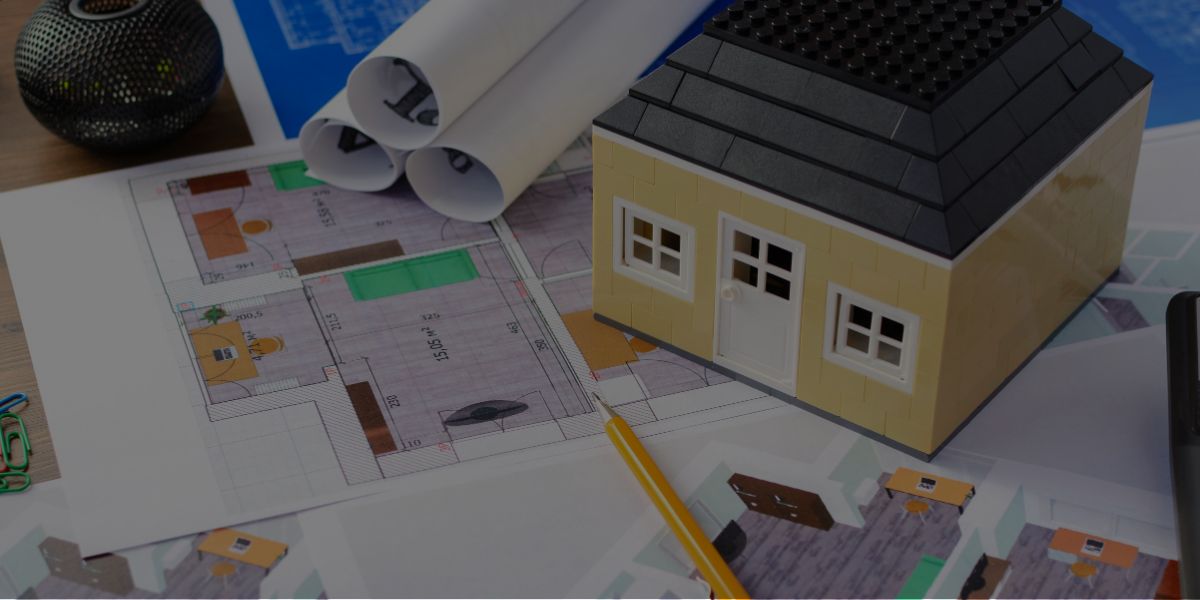It’s no secret that one of the keys to a successful home design project is setting achievable goals. But how do you go about doing that? How can you be sure that your goals are realistic and measurable? In this blog post, we’ll break down how to set achievable goals for your design project! Moreover, we’ll talk about the importance of setting achievable goals – and give you some tips on how to do it.
So, whether you’re a designer or a client, read on for everything you need to know!

What is a Goal?
A goal is a desired outcome or result. It’s what you want to achieve with your design project. Goals can be big or small, but they should always be specific and attainable. You should also make sure that your goals are measurable, so you’ll know when you’ve accomplished them.
What Makes a Goal Measurable?
A measurable goal is one that can be quantified and tracked. Examples of measurable goals could include:
- Complete the design project within a certain timeline or budget
- Increase website traffic by 10% over the course of three months
- Design a logo that will reflect the brand’s values
Furthermore, for every goal, there is a metric and a target. The metric is what you measure (time, budget, website traffic, etc.). Alternately, the target is a number or rate that you want to achieve. Simply put, the target is how much you want to improve the metric.
Here’s an example of what that could look like:
Let’s say you’re an interior decorator and you want to see more people coming to your business website. In this case, the metric would be website traffic. Your target might be to see a 10% increase over the course of three months.
Interested in becoming a professional interior decorator? This Ultimate Guide breaks down everything you need to know for achieving this goal in as little as 3 short months!
How Do You Set Measurable Goals?
Setting measurable goals doesn’t have to be difficult! Here are some tips that can help you get started:
- Start with the end in mind. What do you want to achieve from your project? Write down a list of concrete, measurable goals and objectives.
- Break down each goal into smaller milestones or tasks. Having smaller goals will make it easier to track and measure your progress.
- Set realistic expectations. Make sure that your goal is achievable within the timeframe or budget you have in mind.
- Evaluate your progress regularly. Measure each milestone or task to make sure that you’re on track and progressing towards the final goal.
- Finally, celebrate when you reach your goals! It’s important to recognize and reward yourself when you reach a goal.
What Makes a Goal Achievable?
Achievable goals are ones that you can reasonably accomplish with the resources and time available to you. Before you set your goals, it’s important to consider factors like:
- Budget
- Timeline
- Team members
- And more
For example, if you’re working on a design project with a tight budget and a limited timeline, then your goals may need to be adjusted accordingly.
What are Achievable Goals Examples?
Achievable goals examples might include:
- Designing a logo that reflects the brand’s values;
- Completing the design project within a certain timeline or budget;
- Improving your website’s SEO to increase website traffic;
- Creating a new product design that satisfies customer needs;
- Creating more engaging content for social media;
- Increasing client acquisition by 10%, etc.

Setting Realistic Project Goals
Try to remember that “achievable” goals and “realistic” goals should be seen as synonymous. Unrealistic goals can be disheartening and lead to feelings of failure. Instead, aim for goals that are within reach – goals that are challenging yet motivating.
For instance, let’s imagine for a second that you’re a professional home stager. Your client has a limited budget and an occupied home that they want you to stage ASAP. An example of an unrealistic goal for your project design would be “completely redesign the entire home within a week.”
On the other hand, an achievable goal might be “transform the entryway and living room within two days.”
By setting realistic goals, you can ensure that your project is successful – while still pushing yourself to reach greater heights.
Dream of a career in home staging? Earn your globally-recognized International Staging and Redesign Professional (ISRP) double certification in as little as 3-6 months with QC Design School’s self-paced, online Home Staging Course!
How to Set Achievable Goals for Your Design Project
If you want to know how to set achievable goals for your design project, there are four major frameworks you need to be aware of:
- OKRs
- KPIs
- MBO
- And SMART goals
Let’s take a closer look at each one individually…
1. OKRs
Objectives and Key Results (OKRs) is a goal-setting system originally developed by Google. It’s made up of two parts: the Objective and the Key Result.
The objective should be ambitious yet achievable – it’s your overall mission or vision for the project. The key result is a measurable outcome that will indicate progress towards achieving the objective.
OKR Examples
Here are some examples of what OKRs might look like for you:
- Increase website traffic (Objective) / Increase organic search traffic by 10% (Key Result)
- Improve customer satisfaction (Objective) / Reduce customer feedback response time to 24 hours or less (Key Result)
- Decrease development time (Objective) / Automate parts of the development process to reduce development time by 50% (Key Result)
- Increase word-of-mouth referrals (Objective) / Implement a referral program that encourages customer referrals (Key Result)
- Stay within design project budget (Objective) / Track project costs to ensure budget isn’t exceeded (Key Result)
- Increase client satisfaction with final project results (Objective) / Schedule regular client check-ins to ensure project is meeting goals (Key Result)
- Improve design quality (Objective) / Reduce design errors and inconsistencies by 30% (Key Result)
2. KPIs
Key Performance Indicators (KPIs) are metrics used to track and measure progress towards a goal. KPIs can be both quantitative and qualitative, and they should be specific to your project objectives.
KPI Examples
Here are some examples of what KPIs might look like:
- Website Traffic: Number of visitors, bounce rate, time on site, etc.
- SEO: Number of organic keywords, click-through rate, average position on SERPs, etc.
- Customer Satisfaction: Net Promoter Score, customer feedback response rate, client survey responses, client retention rate, etc.
- Development Time: Cycle time, number of steps in a process, hours spend on development tasks, number of bugs identified and fixed, percentage of automation completed, etc.
- Word-of-Mouth Referrals: Number of referrals generated, referral completion rate, etc.
- Marketing Budget: Cost per lead, cost per acquisition, etc.
- Social Media Engagement: Number of shares, number of comments, number of followers, etc.
- Client Satisfaction: Client survey responses, client retention rate
- Design Quality: Design errors and inconsistencies, image quality, design consistency metrics, etc.
- Final Project Results: Client satisfaction scores, project completion rate, quality control metrics, etc.
3. MBO
Management by Objectives (MBO) is a framework used to set, track, and measure goals. It’s based on the idea that setting goals and objectives (and then measuring performance against them) will help achieve desired improvements in business performance.
Under MBO, you set measurable objectives for yourself as well as specific steps that need to be taken to reach those objectives.
MBO Examples
Imagine that you want to increase website traffic. In this case, your MBO goal might look like this:
- Objective: Increase website traffic by 10%
- Steps: Implement SEO tactics, optimize page titles and descriptions, create keyword-rich content, etc.
Moreover, here are some more examples to illustrate the goal setting power of MBO:
- Complete client’s interior decorating project (Objective) / Measure progress by checking off tasks on the project timeline (Steps)
- Reduce customer complaints by 50% (Objective) / Implement a feedback system, provide better customer service training to staff, etc. (Steps)
- Double sales in the next quarter (Objective) / Implement a new customer onboarding process, develop marketing campaigns targeting existing customers, create promotional offers, etc. (Steps)
- Launch new product within 6 months (Objective) / Set development timeline, coordinate with vendors and contractors, develop product features, build a marketing plan, etc. (Steps)
- Increase customer satisfaction score by 10% (Objective) / Implement customer feedback survey process, create customer service training program, address customer complaints in a timely manner, etc. (Steps)
- Improve team communication (Objective) / Schedule regular team meetings and check-ins, create a shared document repository, establish clear communication protocols, etc. (Steps)
- Improve design quality (Objective) / Establish design standards, use design tools and techniques to reduce errors and inconsistencies, double check designs before sending to client, etc. (Steps)
4. SMART Goals
SMART goals are a popular goal-setting approach that has been used by countless organizations around the world. These goals follow specific criteria – particularly, that they should be:
- Specific
- Measurable
- Actionable
- Relevant, and
- Time-bound
By setting SMART goals for your design project, you can ensure that your project stays on track and you can measure progress towards its completion.
SMART Goal Examples
Here are some examples of what SMART goals might look like for your design project:
- Design a logo that reflects brand values (Specific, Measurable, Actionable, Relevant) / Complete the logo design by June 2023 (Time-bound)
- Stage client’s home for sale on the market (Specific, Measurable, Actionable, Relevant) / Stage the home in two weeks (Time-bound)
- Improve website navigation (Specific, Measurable, Actionable) / Increase user engagement with website by 10% within three months (Relevant and Time-Bound)
- Use professional organizing services to improve client’s current living situation (Specific, Measurable, Actionable, Relevant) / Complete the project within one week (Time-bound)
- Help client select paint color(s) for interior and exterior of home (Specific, Measurable, Actionable, Relevant) / Have the project completed in two days (Time-Bound)
- Transform client’s exterior landscape design (Specific, Measurable, Actionable, Relevant) / Complete the project within two months (Time-Bound)
- Develop a website that provides customers with an intuitive user experience (Specific, Measurable, Actionable, Relevant) / Launch the website by August 2023 (Time-bound)
- Increase engagement on social media channels (Specific, Measurable, Actionable Relevant) / Post twice per day on each channel and reach 500 likes/shares by July 2023 (Time-bound)

How to Set Achievable Goals: Additional Tips for Success
In addition to setting SMART goals and OKRs, there are a few other tips that can help you set achievable goals for your design project…
Tip #1: Make sure the goal is relevant to what you want to achieve!
The goal should be something that supports the overall mission or vision of the project. For instance, imagine that you’re a floral designer and your client wants to learn how to create stunning floral decor within their home.
An irrelevant goal might be to start a business selling floral arrangements online. That isn’t something that is related to what the client wants to achieve. Thus, that won’t help them reach their goal.
However, a relevant goal in this instance might be – as you’ve probably guessed – to help the client create a few floral arrangements that they can display in their home.
Tip #2: Involve stakeholders in the goal-setting process!
A stakeholder is anyone who has an interest in the project. For example, stakeholders may include the clients, team members, and other people who are invested in the project’s success.
Essentially, what a stakeholder does is help ensure that the goal is achievable and aligned with everyone’s expectations. They do this by providing input, feedback, and suggestions as the project progresses. Additionally, they may also help fund the design project or provide resources to help it succeed.
By engaging stakeholders early on, you can help ensure that the goals are aligned with their needs and wants.
Tip #3: Set realistic timelines!
As we mentioned before, it’s important to set reasonable deadlines for tasks. This way, you can stay on track and reach your goals in a timely manner. It’s also helpful to break large tasks into smaller chunks to make them more manageable.
Additionally, you’ll want to consider any external factors that might affect the timeline of your project, such as deadlines set by clients or other stakeholders.
Finally, don’t forget to also leave time for unexpected delays and unforeseen events. After all, life happens… So, always be prepared!
Tip #4: Regularly review progress towards the goal!
Next, it’s important to check in on the progress of the project occasionally. This will help you ensure that it’s still on track and make adjustments as needed. Moreover, it can also provide motivation if things start to feel overwhelming or unachievable.
To review your progress, you may want to set up periodic meetings with stakeholders or team members. During these meetings, you can discuss any issues that have arisen and come up with solutions to make sure the project is still progressing as planned.
Other ways you can review your progress include (but aren’t limited to):
- Creating a timeline with milestones or checkpoints
- Utilizing project tracking tools
- Creating reports to monitor how tasks are going
- Making notes about any unexpected delays or issues
- Setting up automated notifications or emails
- Comparing the initial plan to what has been accomplished
Tip #5: Celebrate successes along the way!
Finally, as we’ve previously discussed, it’s important to recognize and celebrate your successes. This will help boost morale and keep everyone motivated to reach their goals.
For instance, you can celebrate by giving team members rewards or recognition for a job well done. Additionally, you can also host events to mark milestones or achievements. Doing so will show those involved that you appreciate their hard work and dedication.
Similarly, if you’re a one-person operation, it’s just as important for you to congratulate yourself for a job well done! For example, you could reward yourself with a day off or even just something small like treating yourself to a nice dinner.
The bottom line is that when it comes to achieving goals, celebrating the successes along the way is KEY!

Setting Project Goals and Objectives: 10 Mistakes to Avoid
At the end of the day, goal-setting is a process that requires time and effort. However, if done correctly, it can be extremely beneficial for both you and your project.
That being said, here are 10 mistakes to avoid when setting up project goals and objectives:
Mistake #1: Not knowing the difference between your project objective and your project goals.
This is a common mistake made by many people. While the two can be easily confused and used interchangeably, they’re actually quite different from each other.
In a nutshell, project objectives refer to the major outcomes or deliverables of a project. Project goals, on the other hand, are the specific steps that need to be taken in order to reach those objectives.
When you mix up the two (or see them as the same thing), it can lead to confusion and misunderstanding about the project’s ultimate purpose. And as a result, the goal you set might not actually be achievable or in line with the project objectives.
Mistake #2: Not communicating goals and objectives clearly.
It’s essential to make sure that everyone involved in the project is on the same page when it comes to your goals and objectives. Remember: when it comes to goal-setting, specificity is key!
Without clear communication, stakeholders, team members, clients, and suppliers may have different interpretations of what needs to be done – and by when. Not to mention, if your goals are too vague or broad, it’ll be impossible for you or anyone else on the team to measure progress or success.
Mistake #3: Using vague terms or phrases.
This one piggybacks off the the last mistake discussed. When setting goals, it’s important to use language that is precise and specific. Vague terms or phrases can be confusing and lead to misinterpretations of what needs to be accomplished. Additionally, using vague words can make it difficult for others (or even you) to hold yourself accountable.
For example, let’s say that you’re an Aging in Place designer and working on a project within the client’s home. Instead of vaguely writing, “Increase comfort and safety for the client”, you could use a more specific statement like “Install grab bars in the bathroom to increase safety”.
This way, everyone involved is on the same page about what needs to be done and when it needs to be done by.
Never heard of Aging in Place design? Discover what it is and why it’s such an important niche within the home design industry!
Mistake #4: Setting negative goals.
Believe it or not, it’s possible to set negative goals. Negative goals are ones that focus on avoiding a certain outcome, rather than actually achieving something.
For example, let’s say you’re working on a home design project and one of your objectives is to “avoid any mistakes”. This sort of goal won’t help with actually reaching the objective, and can in fact lead to a lack of progress or procrastination.
Instead, focus on writing positive goals that are actionable and achievable. For instance, if you want to avoid mistakes, maybe reframe the goal as “double-check all measurements and calculations before installation”. This will help guide you (and your team) towards success!
Mistake #5: Going a little goal-crazy.
It’s easy to get overzealous with goal-setting and end up with a list that is too long and overwhelming. Having too many goals can lead to confusion and make it difficult for you or your team members to focus on what’s important.
Additionally, having too ambitious of goals could be detrimental if they are not realistic or achievable. Rather, aim for quality over quantity! Furthermore, make sure your goals are realistic and achievable within the time frame you have.
The key to successfully setting project goals is to keep them as simple and specific as possible. Make sure that they are in line with the overall objectives of the project, and don’t be afraid to break down bigger tasks into smaller, more manageable goals. Doing so will help you maintain focus and momentum, as well as ensure that everyone is working towards the same end goal.
Mistake #6: Being misled by others.
Project goals and objectives should be based on what YOU and YOUR CLIENT need to accomplish – not the opinions of others. Unfortunately, it’s all too easy to get caught up in other people’s ideas and opinions, especially if they come from a position of authority or experience.
However, it’s important to remember that everyone has their own biases and preferences, and that doesn’t necessarily mean that their ideas are the best for your project.
Yes, be sure to listen to other’s suggestions. However, always make sure that what you’re working towards aligns with your client’s needs and wants. Doing so will help ensure a successful outcome in the end!
Setting Boundaries with Clients
That said, sometimes it’s the client who’s unintentionally setting unrealistic expectations. In these cases, it’s important to set boundaries and make sure that everyone is on the same page about what needs to be done.
Explain to them why certain tasks or deadlines aren’t feasible and help them understand what’s realistic. Doing so will ensure that you both are working towards a successful outcome.
And if you ever come across a client who simply refuses to compromise or work with you on finding a solution, it’s important to be honest and explain why you cannot work together. Though obviously not ideal, sometimes you just have to say no to a project… And that’s okay!
This will save you both time and energy in the long run.
Pro Tip: Need to turn down a client but worried it’ll ruin your business? Don’t be scared! Here are 7 amazing tips for turning down a project (politely), courtesy of Ignition!

Mistake #7: Not learning from your errors.
Next, another majorly important lesson in goal setting is to learn from your errors. If a project didn’t turn out as expected, take the time to reflect on why it didn’t go according to plan… And what you can do differently next time.
This will help ensure that you don’t make the same mistake twice – and that you are able to continuously improve and learn from each project.
Mistake #8: Failing to track goal progress.
As we’ve mentioned a few times by now, it’s important to track the progress of your goals – both on an individual level and as part of a larger project.
Doing so will help you stay focused and motivated, as well as keep everyone involved in the project accountable for their tasks. It can also reveal any potential issues or roadblocks that could potentially arise, allowing you to address them early on.
Plus, tracking progress also makes it easy for you or your team members to quickly recognize when goals have been achieved – and what needs to be done next.
To ensure that everyone is staying on track (and making progress), consider setting frequent check-ins with your team, as well as regular performance reviews. This will let you know if anything needs to be changed or adjusted in order to get the project back on track.
By taking the time to do this, it’ll ensure that everyone is working efficiently and effectively towards achieving your goals – and ultimately, the success of the project!
Mistake #9: Your project goals aren’t flexible enough.
Another common mistake to be aware of when it comes to goal setting is that your goals are too rigid.
It’s important to remember that sometimes a project will require you to adjust or even scrap certain goals – depending on the circumstances. If a particular deadline can’t be met, or if an unexpected problem arises, don’t be afraid to pivot and adjust the goal accordingly.
This will help you stay agile, allowing you to make quick decisions that are necessary for the success of the project. Plus, it’ll also make it easier to adapt as circumstances change.
By staying flexible and open-minded when setting your goals, you’ll find that they’re much easier to achieve – and that you’re much more likely to have a successful outcome in the end!
Mistake #10: Measuring goal progress incorrectly.
Finally, another key mistake to avoid when it comes to goal setting is to measure your progress incorrectly.
It’s important to track the progress of your goals – but it’s equally as important (if not more so) that you’re tracking the right metrics. Track tangible goals, rather than intangible ones – like number of completed tasks or hours spent on the project, rather than subjective metrics like “team morale”.
By measuring progress correctly, you’ll be able to see what is and isn’t working – making it easier for you or your team to adjust as necessary. This will ensure that everyone is working towards the same goals and will ensure a successful outcome for your client’s design project.
Final Thoughts
As you can see, there are a lot of mistakes to avoid when it comes to goal setting.
Whether it’s failing to plan ahead or even measuring progress incorrectly – these tips will help you stay on track and ensure the success of your project. Plus, by using these tips, you’ll be able to turn down (or accept) offers, delegate tasks, and track progress… All while staying focused on achieving the desired outcome.
So, take these lessons to heart – and start setting goals that will help you reach success!
Good luck and happy designing!


